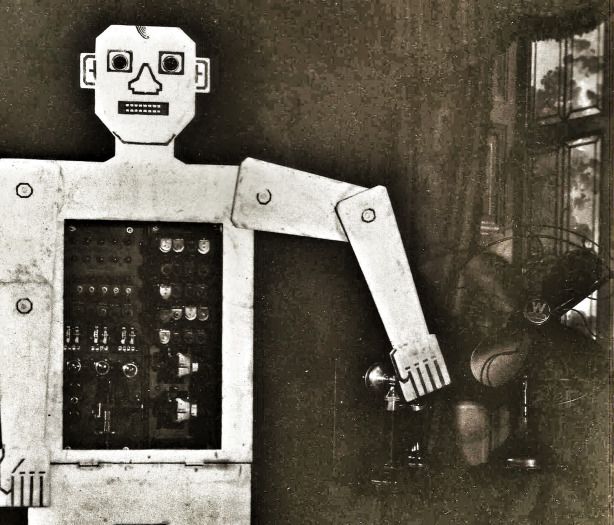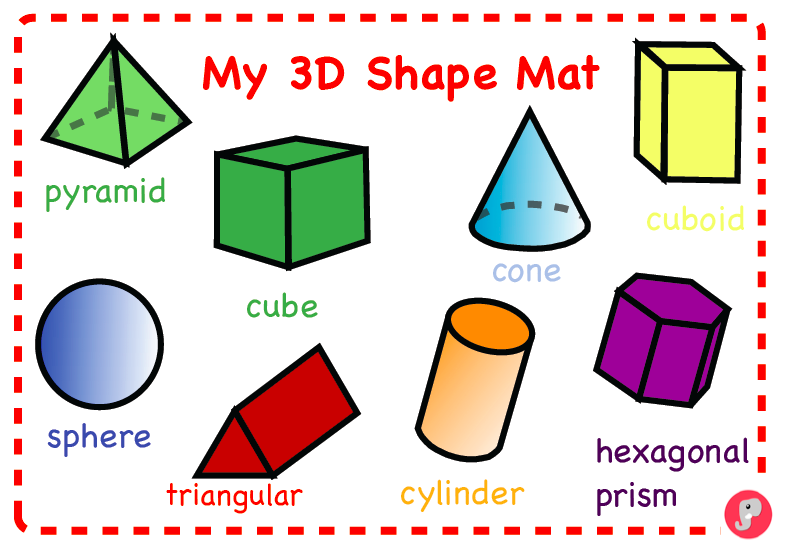Story of robots
The Complete History And Future of Robots
Modern robots are not unlike toddlers: It’s hilarious to watch them fall over, but deep down we know that if we laugh too hard, they might develop a complex and grow up to start World War III. None of humanity’s creations inspires such a confusing mix of awe, admiration, and fear: We want robots to make our lives easier and safer, yet we can’t quite bring ourselves to trust them. We’re crafting them in our own image, yet we are terrified they’ll supplant us.
But that trepidation is no obstacle to the booming field of robotics. Robots have finally grown smart enough and physically capable enough to make their way out of factories and labs to walk and roll and even leap among us. The machines have arrived.
You may be worried a robot is going to steal your job, and we get that. This is capitalism, after all, and automation is inevitable. But you may be more likely to work
alongside a robot in the near future than have one replace you. And even better news: You’re more likely to make friends with a robot than have one murder you. Hooray for the future!
The History of Robots
The definition of “robot” has been confusing from the very beginning. The word first appeared in 1921, in Karel Capek’s play R.U.R., or Rossum's Universal Robots. “Robot” comes from the Czech for “forced labor.” These robots were robots more in spirit than form, though. They looked like humans, and instead of being made of metal, they were made of chemical batter. The robots were far more efficient than their human counterparts, and also way more murder-y—they ended up going on a killing spree.
R.U.R. would establish the trope of the Not-to-Be-Trusted Machine (e.g., Terminator, The Stepford Wives, Blade Runner, etc.) that continues to this day—which is not to say pop culture hasn’t embraced friendlier robots. Think Rosie from The Jetsons. (Ornery, sure, but certainly not homicidal. ) And it doesn’t get much family-friendlier than Robin Williams as Bicentennial Man.
) And it doesn’t get much family-friendlier than Robin Williams as Bicentennial Man.
The real-world definition of “robot” is just as slippery as those fictional depictions. Ask 10 roboticists and you’ll get 10 answers—how autonomous does it need to be, for instance. But they do agree on some general guidelines: A robot is an intelligent, physically embodied machine. A robot can perform tasks autonomously to some degree. And a robot can sense and manipulate its environment.
Think of a simple drone that you pilot around. That’s no robot. But give a drone the power to take off and land on its own and sense objects and suddenly it’s a lot more robot-ish. It’s the intelligence and sensing and autonomy that’s key.
But it wasn’t until the 1960s that a company built something that started meeting those guidelines. That’s when SRI International in Silicon Valley developed Shakey, the first truly mobile and perceptive robot. This tower on wheels was well-named—awkward, slow, twitchy. Equipped with a camera and bump sensors, Shakey could navigate a complex environment. It wasn’t a particularly confident-looking machine, but it was the beginning of the robotic revolution.
Equipped with a camera and bump sensors, Shakey could navigate a complex environment. It wasn’t a particularly confident-looking machine, but it was the beginning of the robotic revolution.
Around the time Shakey was trembling about, robot arms were beginning to transform manufacturing. The first among them was Unimate, which welded auto bodies. Today, its descendants rule car factories, performing tedious, dangerous tasks with far more precision and speed than any human could muster. Even though they’re stuck in place, they still very much fit our definition of a robot—they’re intelligent machines that sense and manipulate their environment.
Robots, though, remained largely confined to factories and labs, where they either rolled about or were stuck in place lifting objects. Then, in the mid-1980s Honda started up a humanoid robotics program. It developed P3, which could walk pretty darn good and also wave and shake hands, much to the delight of a roomful of suits. The work would culminate in Asimo, the famed biped, which once tried to take out President Obama with a well-kicked soccer ball.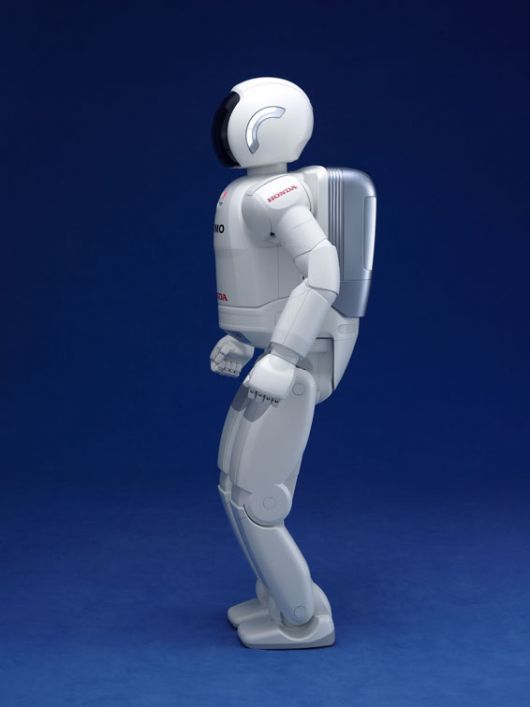 (OK, perhaps it was more innocent than that.)
(OK, perhaps it was more innocent than that.)
Today, advanced robots are popping up everywhere. For that you can thank three technologies in particular: sensors, actuators, and AI.
So, sensors. Machines that roll on sidewalks to deliver falafel can only navigate our world thanks in large part to the 2004 Darpa Grand Challenge, in which teams of roboticists cobbled together self-driving cars to race through the desert. Their secret? Lidar, which shoots out lasers to build a 3-D map of the world. The ensuing private-sector race to develop self-driving cars has dramatically driven down the price of lidar, to the point that engineers can create perceptive robots on the (relative) cheap.
History of Robots and Robotics
Although the science of robotics only came about in the 20th century, the history of robots and human-invented automation has a much lengthier past. In fact, the ancient Greek engineer Hero of Alexandria produced two texts, Pneumatica and Automata, that testify to the existence of hundreds of different kinds of “wonder” machines capable of automated movement.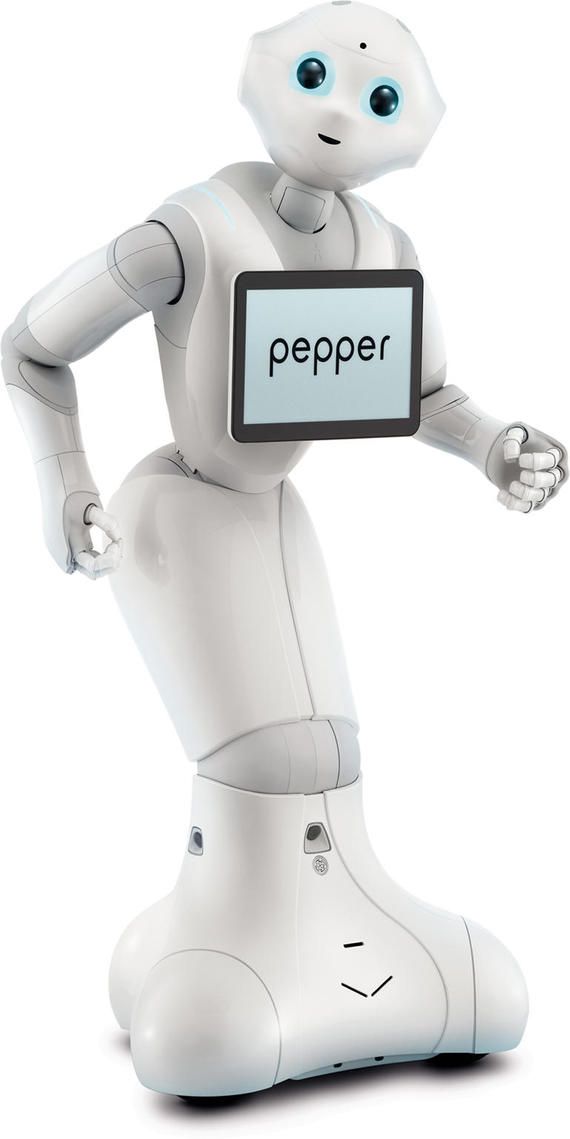 Of course, the evolution of robots in the 20th and 21st centuries has advanced radically to include machines capable of assembling other machines and even robots that can be mistaken for human beings.
Of course, the evolution of robots in the 20th and 21st centuries has advanced radically to include machines capable of assembling other machines and even robots that can be mistaken for human beings.
The History of Robots
Where did the term robot come from? The word robotics was inadvertently coined by science fiction author Isaac Asimov in his 1941 story “Liar!” Science fiction authors throughout history have been interested in man’s capability of producing self-motivating machines and lifeforms, from the ancient Greek myth of Pygmalion to Mary Shelley’s Dr. Frankenstein and Arthur C. Clarke’s HAL 9000. Essentially, a robot is a re-programmable machine that is capable of movement in the completion of a task. Robots use special coding that differentiates them from other machines and machine tools, such as CNC. Robots have found uses in a wide variety of industries due to their robust resistance capabilities and precision function.
Historical Robotics
Many sources attest to the popularity of automatons in ancient and Medieval times. Ancient Greeks and Romans developed simple automatons for use as tools, toys, and as part of religious ceremonies. Predating modern robots in industry, the Greek God Hephaestus was supposed to have built automatons to work for him in a workshop. Unfortunately, none of the early automatons are extant.
Ancient Greeks and Romans developed simple automatons for use as tools, toys, and as part of religious ceremonies. Predating modern robots in industry, the Greek God Hephaestus was supposed to have built automatons to work for him in a workshop. Unfortunately, none of the early automatons are extant.
In the Middle Ages, in both Europe and the Middle East, automatons were popular as part of clocks and religious worship. The Arab polymath Al-Jazari (1136-1206) left texts describing and illustrating his various mechanical devices, including a large elephant clock that moved and sounded at the hour, a musical robot band, and a waitress automaton that served drinks. In Europe, there is an automaton monk extant that kisses the cross in its hands. Many other automata were created that showed moving animals and humanoid figures that operated on simple cam systems, but in the 18th century, automata were understood well enough and technology advanced to the point where much more complex pieces could be made.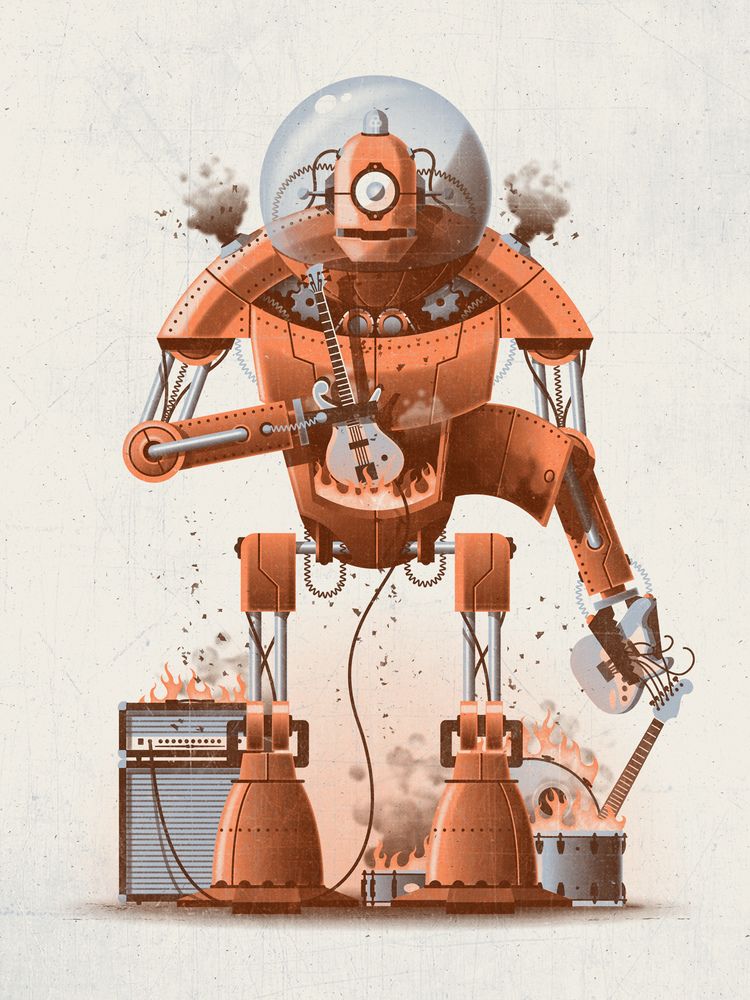 French engineer Jacques de Vaucanson is credited with creating the first successful biomechanical automaton, a human figure that plays the flute. Automata were so popular that they traveled Europe entertaining heads of state such as Frederick the Great and Napoleon Bonaparte.
French engineer Jacques de Vaucanson is credited with creating the first successful biomechanical automaton, a human figure that plays the flute. Automata were so popular that they traveled Europe entertaining heads of state such as Frederick the Great and Napoleon Bonaparte.
Victorian Robots
The Industrial Revolution and the increased focus on mathematics, engineering, and science in England in the Victorian age added to the momentum towards actual robotics. Charles Babbage (1791-1871) worked to develop the foundations of computer science in the early-to-mid nineteenth century, his most successful projects being the difference engine and the analytical engine. Although never completed due to a lack of funds, these two machines laid out the basics for mechanical calculations. Others such as Ada Lovelace recognized the future possibility of computers creating images or playing music.
Automata continued to provide entertainment during the 19th century, but coterminous with this period was the development of steam-powered machines and engines that helped to make manufacturing much more efficient and quick. Factories began to employ machines to either increase workloads or precision in the production of many products.
Factories began to employ machines to either increase workloads or precision in the production of many products.
The Twentieth Century to Today
In 1920, Karel Capek published his play R.U.R. (Rossum’s Universal Robots), which introduced the word “robot.” It was taken from an old Slavic word that meant something akin to “monotonous or forced labor.” However, it was more than thirty years before the first industrial robot went to work. In the 1950s, George Devol designed the Unimate, a robotic arm device that transported die castings in a General Motors plant in New Jersey, which started work in 1961. Unimation, the company Devol founded with robotic entrepreneur Joseph Engelberger, was the first robot manufacturing company. The robot was originally seen as a curiosity. Also in the mid-1950s, the German firm Kuka developed an automated welding line for appliances as well as a multi-spot welding line for Volkswagen. By 1968, Kawasaki had licensed a Unimation design of a hydraulic robot and had begun building them. In 1969, GM had achieved 90% of body welds using Unimates in one of its plants. In 1970, Stanford University developed the so-called Standard Arm, as it is still known today, used for small parts assembly and incorporating touch and pressure feedback.
In 1969, GM had achieved 90% of body welds using Unimates in one of its plants. In 1970, Stanford University developed the so-called Standard Arm, as it is still known today, used for small parts assembly and incorporating touch and pressure feedback.
Automated welding was to become the significant application of industrial robots as the machines could produce high-quality welds in somewhat inhospitable conditions. Kuka, by 1973, had introduced the six-axis arm, which would become an industry standard. This was about the same time that fully-electric robots began making their appearance. Cincinnati Milacron introduced a microcomputer-controlled industrial robot for commercial use in the same year. As the seventies rolled by, the decade saw many firsts: an all-electric microprocessor-controlled robot, a high precision insertion robot, higher payloads, a sensor-based welding robot, the PUMA robot for small parts assembly, development of the Selectively Compliant (SCARA) arm, and the switch from hydraulic to electric motor drives in spot welding robots.
When 1980 arrived, so too did a demonstration of machine vision at the University of Rhode Island. GM would put three robots to work the next year sorting castings by machine vision. More innovation would pepper the decade: the development of a robot programming language, a direct drive SCARA robot. Speeds and capacities were heading up, too.
The 1990s brought innovations in robot controls and synchronization as well as the first packaging robot, which loaded pretzels. A patent late in the decade added laser guiding directly on the robot arm.
Many were astounded in 2003 by the feats of NASA robotic rovers Spirit and Opportunity exploring the surface of Mars. 2004 saw the synchronization of four robots, and a total of 38 axes working together. The next year, a wireless teach pendant made instructing a robot safer. Strides continued in lightweighting, payload capacities, and reach, speeds, and multi-axis synchronization.
Robots went to work in homes in 2003 with the introduction of the Roomba robotic vacuum.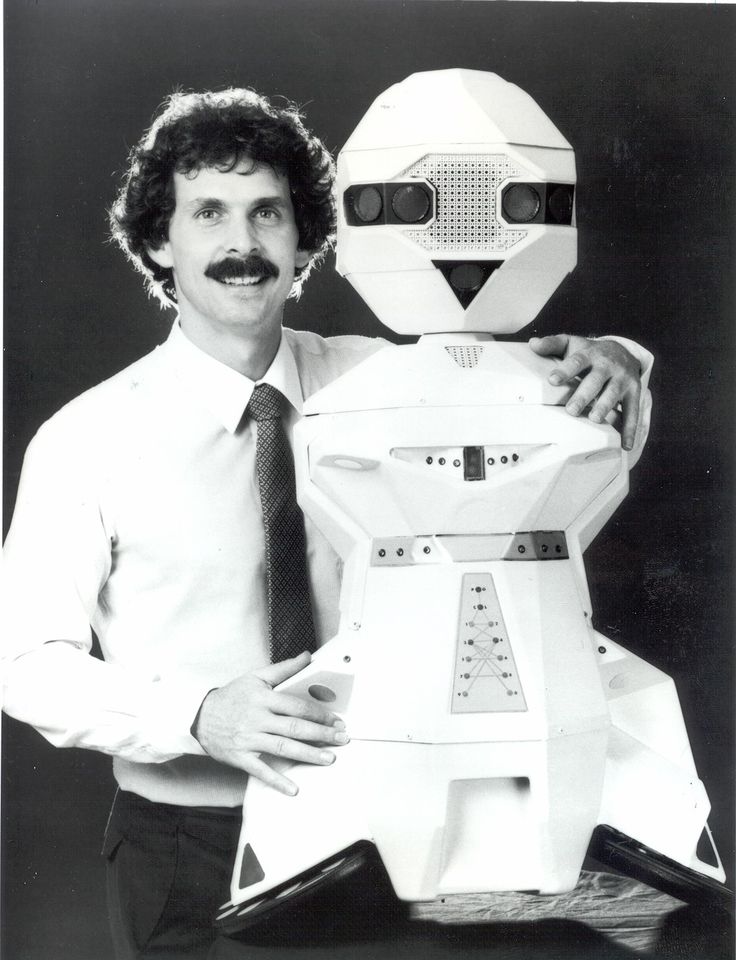 By 2009 the development of autonomous industrial vehicles was well underway and by the start of the next decade, robotic arms were becoming mobile in the industrial space. The year 2013 saw the introduction of collaborative robots, or COBOTS, designed to work side by side with human workers. By the next year, AMRs, or Autonomous Mobile Robots, were actively at work in warehouses. In 2015 Omron Electronics bought Adept Technologies, whose roots trace back to Unimation, the first robot company. Similar big buys would take place during the remainder of the decade.
By 2009 the development of autonomous industrial vehicles was well underway and by the start of the next decade, robotic arms were becoming mobile in the industrial space. The year 2013 saw the introduction of collaborative robots, or COBOTS, designed to work side by side with human workers. By the next year, AMRs, or Autonomous Mobile Robots, were actively at work in warehouses. In 2015 Omron Electronics bought Adept Technologies, whose roots trace back to Unimation, the first robot company. Similar big buys would take place during the remainder of the decade.
Over the last half-century, robots have found a place in other spheres, as toys and entertainment, military weapons, search and rescue assistants, and many other jobs. Essentially, as programming and technology improve, robots find their way into many jobs that in the past have been too dangerous, dull, or impossible for humans to achieve.
Summary
This article presented a brief history of robots and robotics.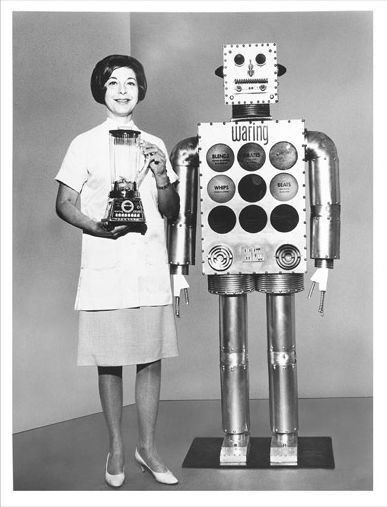 For more information on related products, consult our other guides or visit the Thomas Supplier Discovery Platform to locate potential sources of supply or view details on specific products.
For more information on related products, consult our other guides or visit the Thomas Supplier Discovery Platform to locate potential sources of supply or view details on specific products.
Other Robotics Articles
- Industrial Robotics Principles
- Industrial Robot Basics
- Top Robotic Components Manufacturers and Suppliers in North America
More from Automation & Electronics
The history of robotics: what did the very first robots look like?
For several hundred years in a row, humanity has been trying to make life as easy as possible for itself by shifting the implementation of complex tasks onto the shoulders of robots. And we are doing this very well, because today anyone can buy a robot vacuum cleaner for not so much money and forget about mopping. In hospitals in some countries, part of the staff are robots designed to care for patients. And in factories, production mechanisms automatically assemble electronics and even huge cars.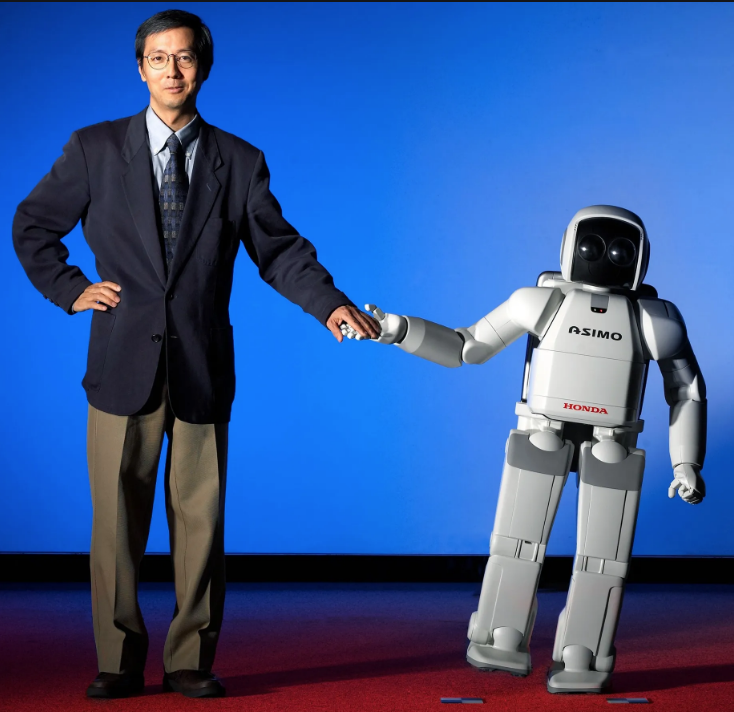 But when did mankind even think about the development of robots and when did the inventors manage to create them? Many will say that the world's first robot was created by the well-known Leonardo da Vinci - after all, it was no accident that among his documents there was a scheme for assembling a humanoid mechanism? But, in fact, the first robots were created long before the birth of the Italian artist and scientist.
But when did mankind even think about the development of robots and when did the inventors manage to create them? Many will say that the world's first robot was created by the well-known Leonardo da Vinci - after all, it was no accident that among his documents there was a scheme for assembling a humanoid mechanism? But, in fact, the first robots were created long before the birth of the Italian artist and scientist.
"Mr. Televox" - one of the first American robots
Contents
- 1 What are robots?
- 2 The first robots in history
- 3 Leonardo da Vinci's robot
- 4 The first robot musician
- 5 The first Soviet robot
- 6 Modern robots
What are robots?
The word "robot" comes from the word robota , which can be translated as "forced labor". That is, what is called a “robot”, against its will, must carry out commands and, in essence, be a slave. To be more precise, the term implies a device that is designed to perform a certain kind of action according to a predetermined instruction.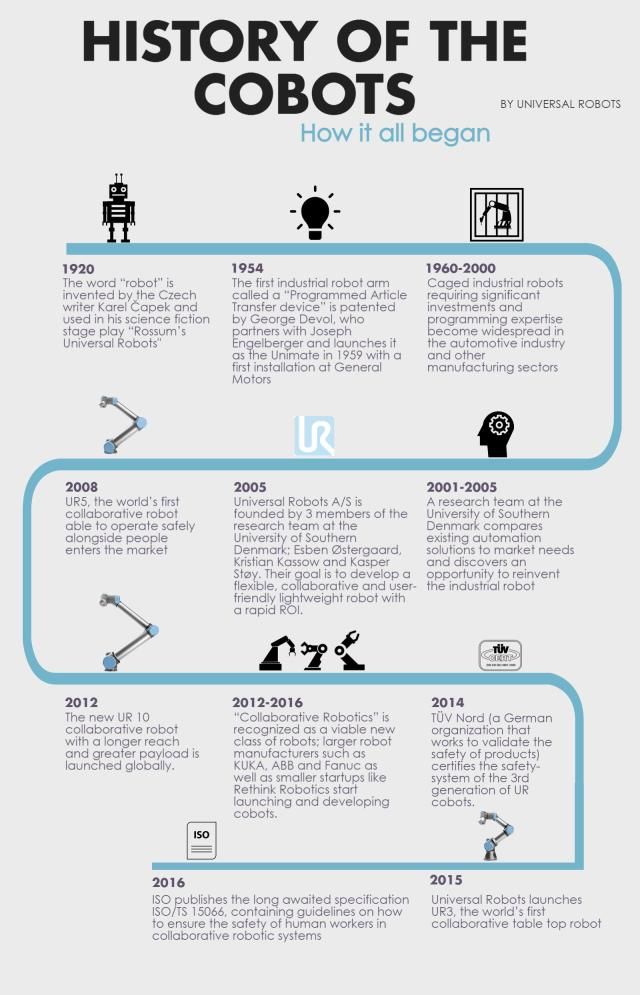 Typically, robots receive information about the environment from built-in sensors that play the role of sensory organs. And they are engaged in the fulfillment of tasks either independently, following the laid down program, or obeying the commands of another person. The purpose of robots can be different, ranging from entertaining people to assembling complex devices.
Typically, robots receive information about the environment from built-in sensors that play the role of sensory organs. And they are engaged in the fulfillment of tasks either independently, following the laid down program, or obeying the commands of another person. The purpose of robots can be different, ranging from entertaining people to assembling complex devices.
Robots are different, but the main thing is that they do not harm people
Interesting fact: American science fiction writer Isaac Asimov is the author of three laws of robotics. First, a robot cannot harm a person. The second is that the robot must obey all human commands except those that contradict the first law. Thirdly, the robot must take care of itself to the extent that does not contradict the first and second laws.
The first robots in history
According to historical data, the first robots in the world were created around 300 BC. Then, on the lighthouse of the Egyptian island of Pharos, two huge figures in the form of women were installed.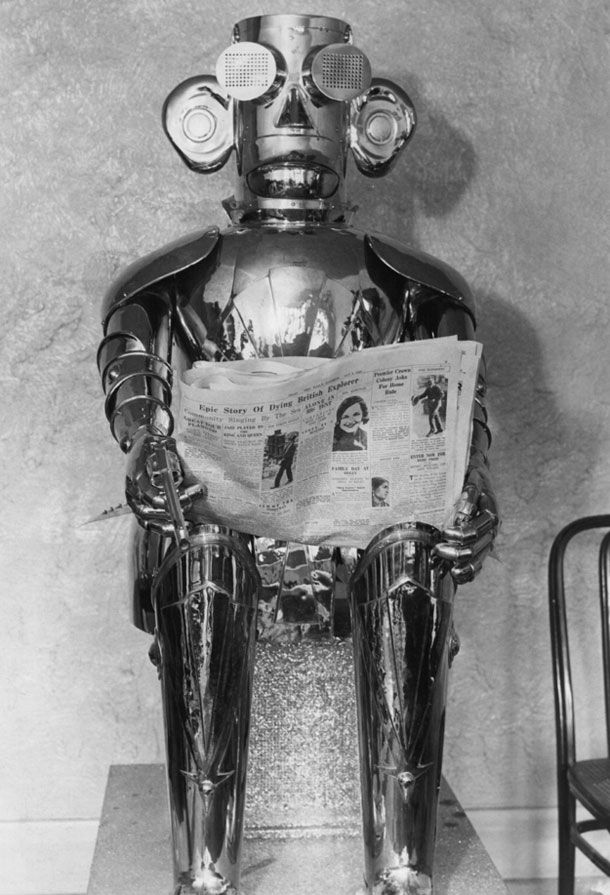 In the daytime, they were well lit by themselves, and at night they were lit up by artificial light. From time to time they turned and struck the bell, and at night they made loud noises. And all this was done so that the arriving ships learned in time about the approach to the coast and prepared to stop. Indeed, sometimes, in the event of fog or a pitch-black night, the shore could not be noticed. And these women can be called robots, because their actions exactly correspond to the meaning of the word "robot".
In the daytime, they were well lit by themselves, and at night they were lit up by artificial light. From time to time they turned and struck the bell, and at night they made loud noises. And all this was done so that the arriving ships learned in time about the approach to the coast and prepared to stop. Indeed, sometimes, in the event of fog or a pitch-black night, the shore could not be noticed. And these women can be called robots, because their actions exactly correspond to the meaning of the word "robot".
Faros lighthouse
Leonardo da Vinci robot
One of the first robots was invented by the Italian scientist Leonardo da Vinci. According to documents discovered in the 1950s, the artist developed a drawing of a humanoid robot in 1495. The diagrams showed the frame of a robot that was programmed to perform human movements. He had an anatomically correct jaw model and was able to sit down, move his arms and neck. The records said that knightly armor should be worn over the frame.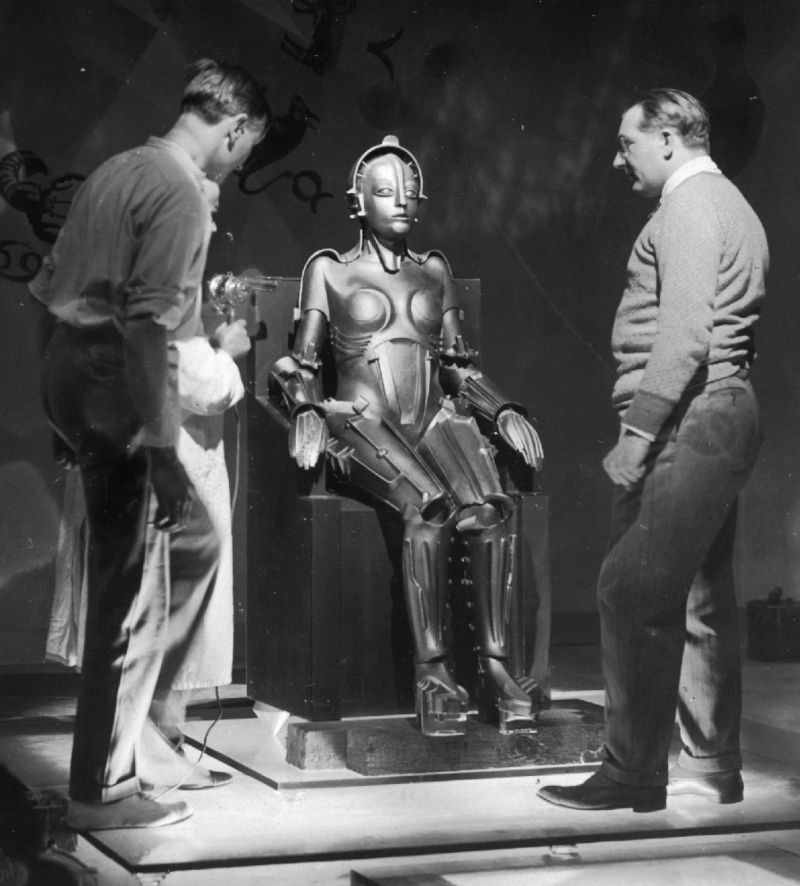 Most likely, the idea to create an "artificial person" came to the artist's mind during the study of the human body.
Most likely, the idea to create an "artificial person" came to the artist's mind during the study of the human body.
Reconstruction of the robot knight
Unfortunately, scientists have not been able to find evidence that Leonardo da Vinci's robot was actually created. Most likely, the idea remained on paper and was never translated into reality. But the robot was recreated in modern times, hundreds of years after the drawing was developed. The robot was assembled by Italian professor Mario Taddei, who is considered an expert on the inventions of Leonardo da Vinci. When assembling the mechanism, he strictly followed the drawings of the artist and ultimately created what the inventor wanted to achieve. Of course, this robot does not shine with wide possibilities, but the professor was able to write the book “Leonardo da Vinci Machines”, which was translated into 20 languages.
The first robot musician
A few hundred years after Leonardo da Vinci, the French mechanic Jacques de Vaucanson attempted to create an artificial man. According to historical documents, in 1738 he managed to create a robot, the structure of which completely copies the human anatomy. He could not walk, but he played the flute very well. Thanks to the design of many springs and devices for blowing air into various parts of the mechanism, the robot flute player could play the wind instrument with his lips and moving fingers. The demonstration of the robot took place in Paris and was described in the scientific work "Le mécanisme du fluteur automate".
According to historical documents, in 1738 he managed to create a robot, the structure of which completely copies the human anatomy. He could not walk, but he played the flute very well. Thanks to the design of many springs and devices for blowing air into various parts of the mechanism, the robot flute player could play the wind instrument with his lips and moving fingers. The demonstration of the robot took place in Paris and was described in the scientific work "Le mécanisme du fluteur automate".
Diagram of Jacques de Vaucanson's copper duck
In addition to the humanoid robot, Jacques de Vaucanson created robotic ducks out of copper. At their core, they were mechanical toys that could move their wings, peck at food and, no matter how strange it may sound, “defecate”. Today, such technologies would look extremely strange. In addition, such toys can already be freely bought in any children's store. There are both walking figures and complex remote-controlled robots.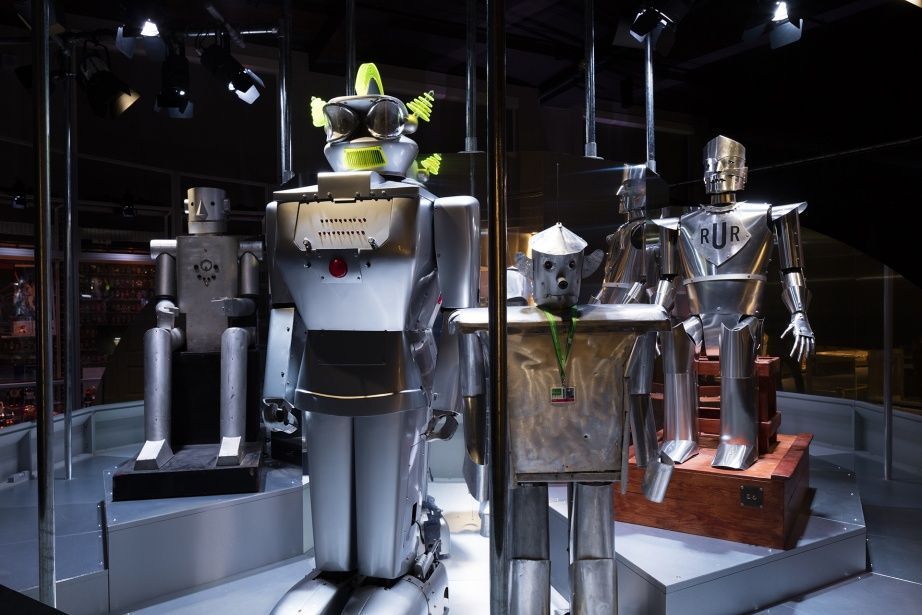 But hundreds of years ago, copper ducks certainly seemed like something magical.
But hundreds of years ago, copper ducks certainly seemed like something magical.
See also: How is the most complex robot on Earth?
The first Soviet robot
In the 20th century, humanity has already realized the prospects of robotics and is seriously engaged in the production of robots. In those days, engineers wanted to create humanoid mechanisms, but they did not look like real people. By modern standards, they were metal monsters at all, who knew practically nothing. So, in 1928, the American engineer Roy Wensley showed the public the robot "Mr. Televox", which could move several limbs and perform simple voice commands.
American Mister Televoks
The Soviet Union also did not want to stand aside. While in other countries the development of complex mechanisms was carried out by serious men in thick glasses, in the first Soviet robot was created by a 16-year-old schoolboy. It turned out to be Vadim Matskevich, who at the age of eight created a compact radio station, and at the age of 12 he invented a tiny armored car that fired rockets.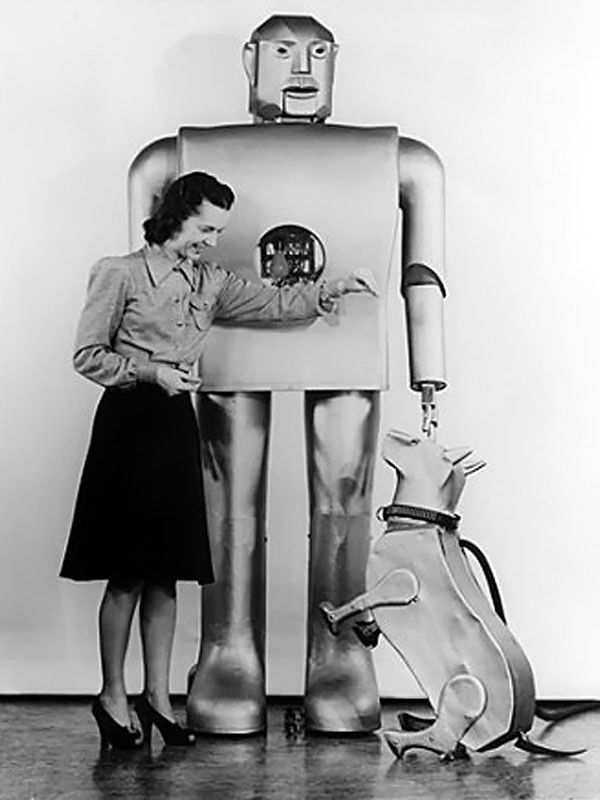 He was a very famous boy and soon acquired all the components necessary to create a full-fledged robot.
He was a very famous boy and soon acquired all the components necessary to create a full-fledged robot.
The first Soviet robot "B2M"
The Soviet robot "B2M" was presented in 1936 at the World Exhibition in Paris. His height was 1.2 meters, and radio communications were used for control. The humanoid robot was able to carry out 8 commands, which consisted in moving different parts of the body. Due to the weakness of the motors, the robot could not fully understand the right hand and this gesture was similar to the Nazi salute. Because of this misunderstanding, the B2M robot brought the boy a lot of problems, and only his youth and support from the authorities of the USSR anti-crime agency saved him from repression.
Foreign newspaper clipping about a new version of the B2M robot
In 1969, young followers of Matskevich created a new robot based on the B2M design. This android was presented to the public as part of the Japanese exhibition "EXPO-70" and also attracted the attention of the world community.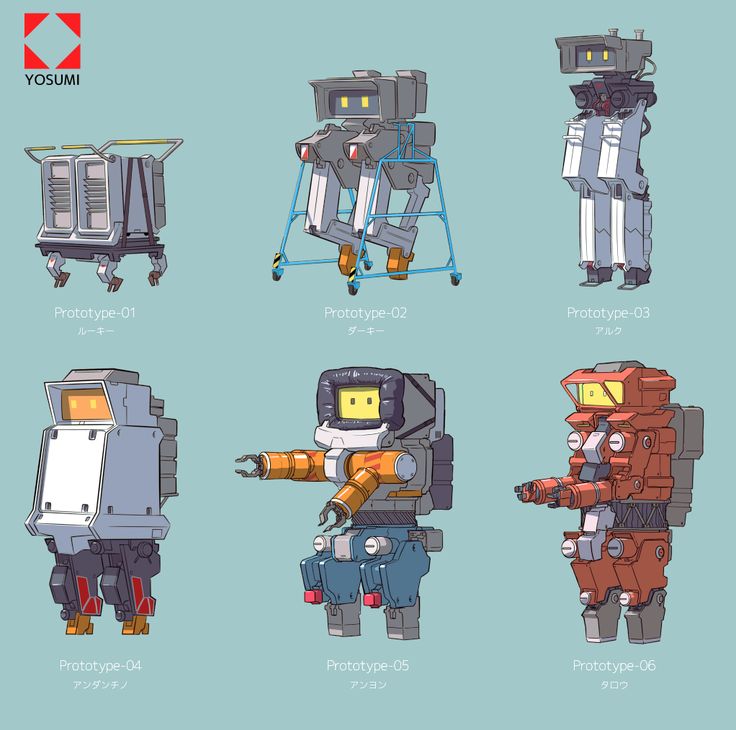 And all this time Vadim Matskevich himself was creating "technical" games for schoolchildren and wrote two popular books: "An entertaining history of robotics" and "How to build a robot." Matskevich died in 2013, and the documentary “How One Lieutenant Stopped the War” was made in his honor.
And all this time Vadim Matskevich himself was creating "technical" games for schoolchildren and wrote two popular books: "An entertaining history of robotics" and "How to build a robot." Matskevich died in 2013, and the documentary “How One Lieutenant Stopped the War” was made in his honor.
Modern robots
Despite all the merits, the title of "father of robotics" does not belong to Vadim Matskevich, not to Jacques de Vaucanson, and not even to Leonardo da Vinci. This title was given to American engineer Joseph Engelberger, who met inventor George Devol in 1956. Three years after they met, they introduced the production robot Unimate #001 to the world. Subsequently, the mechanism was improved several times and the first robot for assembling cars appeared. It was installed at one of the General Motors factories to help in casting parts.
Unimate #001 - the first industrial robot
Over the next decades, robotics leapt forward.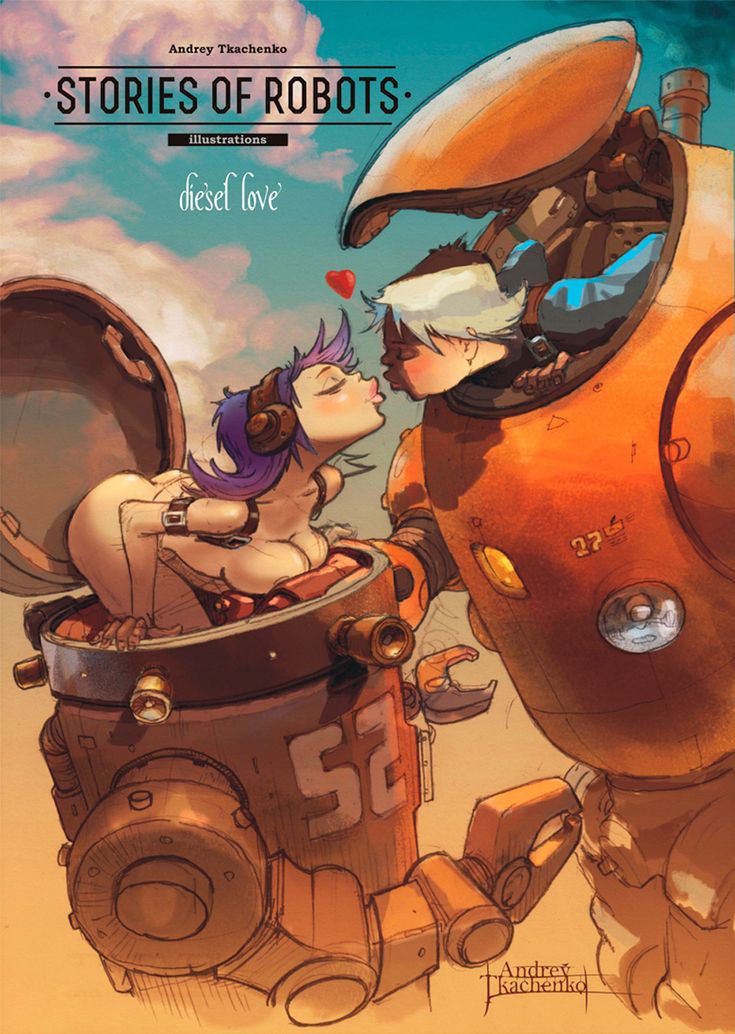 Between about 1970 and 2000, engineers came up with many new sensors and controllers that can be controlled using different programming languages. Robots in their modern form appeared in 1999, when Sony introduced a robot dog named AIBO. She behaves like a living organism and is able to carry out almost all dog commands.
Between about 1970 and 2000, engineers came up with many new sensors and controllers that can be controlled using different programming languages. Robots in their modern form appeared in 1999, when Sony introduced a robot dog named AIBO. She behaves like a living organism and is able to carry out almost all dog commands.
History of AIBO robots
Shortly thereafter, Boston Dynamics took over the development of robots. We often talk about it on our website, and we publish news about updates to branded robots in our Telegram channel. Of course, the created robots are still far from perfect, and engineers have a lot of work to do.
History of robotics: from the first robots of antiquity to the present day
News
bogdan
What does the word "robot" associate with a person living in the 21st century? With a humanoid machine with artificial intelligence like in Isaac Asimov's collection of science fiction stories? But before 1920, the concept of "robot" did not exist.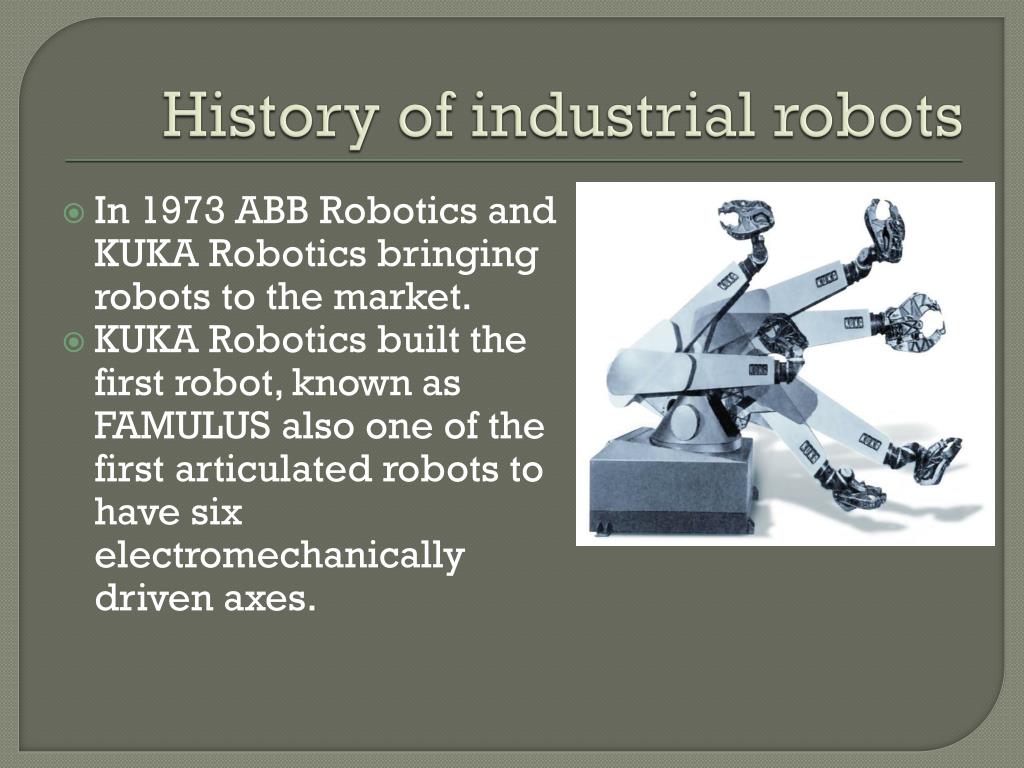 It was created by the Czech writer Karel Capek in the fantasy play "R.U.R." naming their characters.
It was created by the Czech writer Karel Capek in the fantasy play "R.U.R." naming their characters.
To figure out where the robots came from, you need to go back to the distant past to Ancient Greece and Greek inventors.
Inventions of old were set in motion by primitive methods: water, steam, levers, spikes and counterweights, but also mercury and gunpowder explosions in China. In the robotics of antiquity, there are many references to gods capable of moving their hands and heads that the audience is in awe. It was then that the Greek inventors laid the foundation for robotics, and the first began to use mathematical methods.
Ancient robots of the Middle Ages
In the Middle Ages, the development of robotics continued. Watchmakers, both from Europe and from Russia, created automatic machines in the form of people, animal angels, who staged whole performances. Then complex humanoid and zoomorphic automatons appeared: lions roared, birds sang.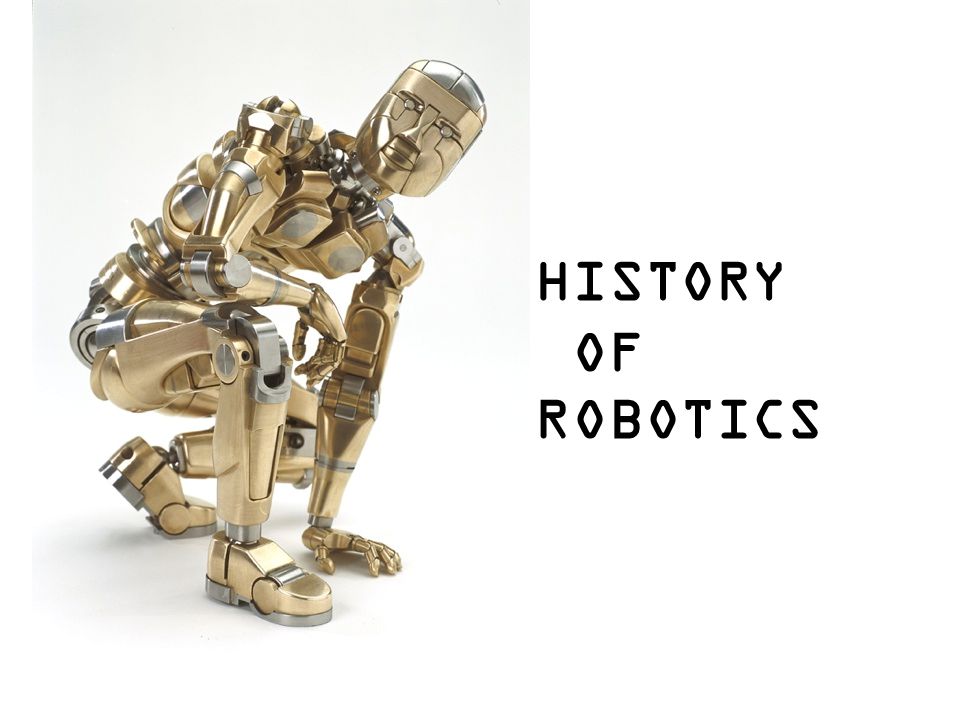 Leonardo da Vinci also invented the mechanical lion. The lion could walk a few steps and, stopping, opened a door in its side. In 1495, at the court of Louis Sforza, another invention of the great genius was presented - the figure of a knight clad in armor, which could move, sit down and even open its mouth. It was the world's first human-like robot.
Leonardo da Vinci also invented the mechanical lion. The lion could walk a few steps and, stopping, opened a door in its side. In 1495, at the court of Louis Sforza, another invention of the great genius was presented - the figure of a knight clad in armor, which could move, sit down and even open its mouth. It was the world's first human-like robot.
New energy storage springs and pendulums began to appear. During this period, the master Jacques de Vaucanson became especially famous, who created two special inventions: the Mechanical duck. She flapped her wings, pecked at grain and defecated. Automatic musician. He played various melodies on the flute and pipe.
The history of the creation of robots "androids".
In the 18th century, master Pierre Jaquet Droz created the first android robot with the ability to program. They were: a "clerk" capable of writing any text of 40 characters; an "artist" who applied drawings to paper, for example, portraits of people, images of animals; "girl musician" who played 5 different melodies on a small organ, while moving her head with a graceful bow at the end of the performance.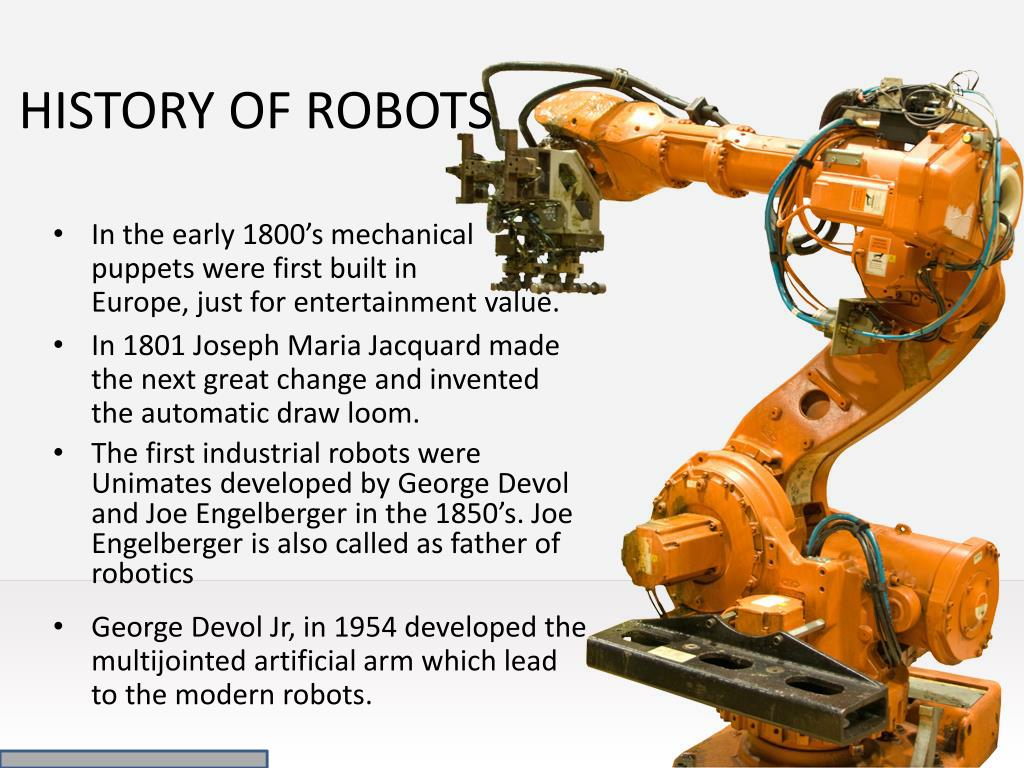
In 1936 schoolboy Vadim Matskevich created the first Soviet android robot B2M.
XIX-XX century
Industrial robots are being created using information technology. In 1959, the first robotic arm was created under the name Unimate. These computer-controlled robots are replacing humans in factories, assembly lines, and assembly lines. Automation freed people to develop new designs and improve old ones. Robots give life to new robots, combat and universal robots appear.
Fighting robots
In 1910, Ohio military engineer Charles Kettering proposed the use of unmanned aircraft. The idea was to drop wings on the enemy like bombs, controlling the clockwork. But they were never used in combat.
In 1931, teletanks were built, controlled by radio waves at a distance, but near high-voltage power lines, radio waves were interfered with, subsequently, the operators lost control.
First female robot
The name of the first female robot is Sophia.